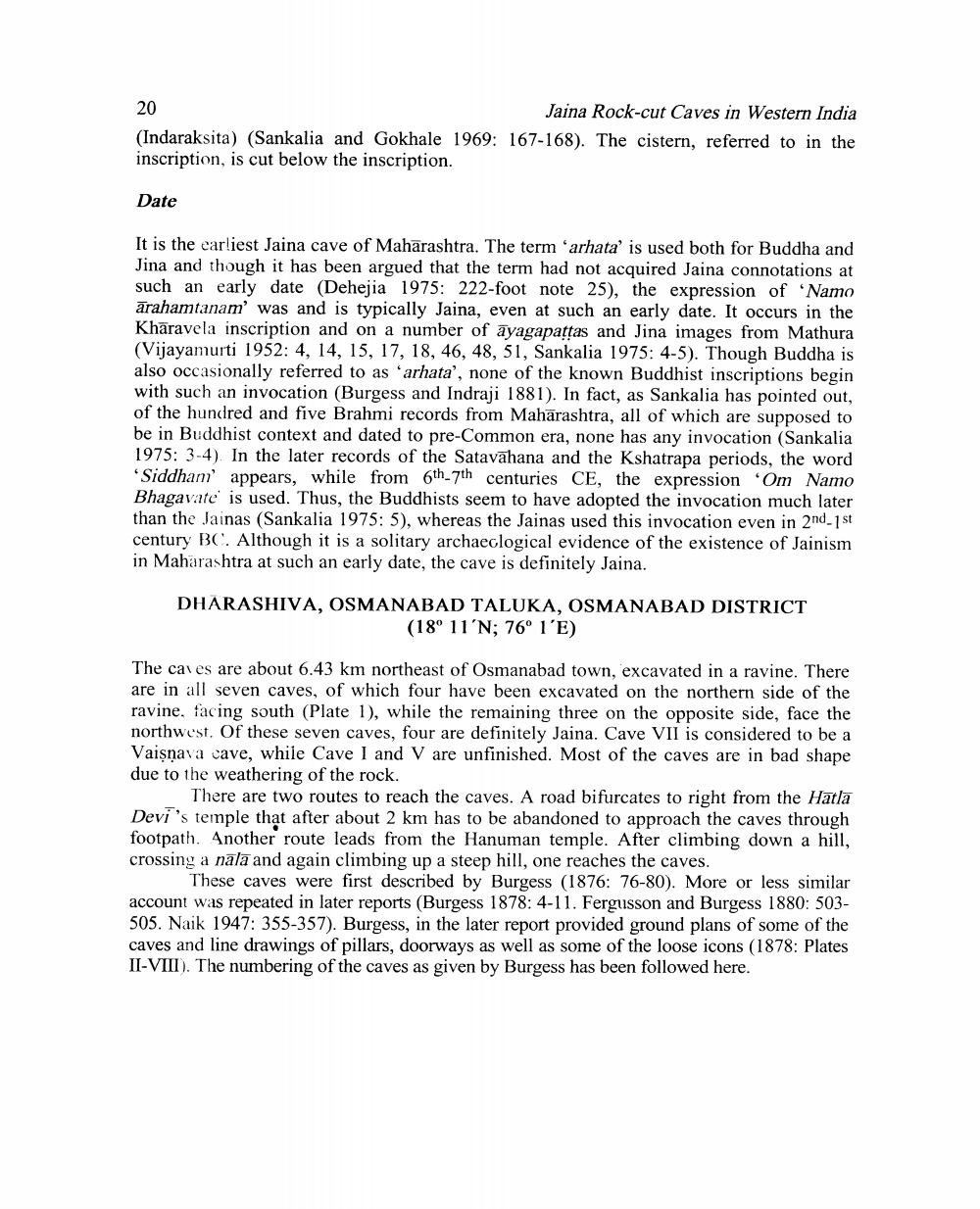________________
20
Jaina Rock-cut Caves in Western India (Indaraksita) (Sankalia and Gokhale 1969: 167-168). The cistern, referred to in the inscription, is cut below the inscription.
Date
It is the earliest Jaina cave of Maharashtra. The term 'arhata' is used both for Buddha and Jina and though it has been argued that the term had not acquired Jaina connotations at such an early date (Dehejia 1975: 222-foot note 25), the expression of 'Namo ārahamtanam' was and is typically Jaina, even at such an early date. It occurs in the Khāravela inscription and on a number of ayagapattas and Jina images from Mathura (Vijayamurti 1952: 4, 14, 15, 17, 18, 46, 48, 51, Sankalia 1975: 4-5). Though Buddha is also occasionally referred to as "arhata', none of the known Buddhist inscriptions begin with such an invocation (Burgess and Indraji 1881). In fact, as Sankalia has pointed out, of the hundred and five Brahmi records from Maharashtra, all of which are supposed to be in Buddhist context and dated to pre-Common era, none has any invocation (Sankalia 1975: 3-4). In the later records of the Satavāhana and the Kshatrapa periods, the word
Siddham' appears, while from 6th-7th centuries CE, the expression 'Om Namo Bhagavate is used. Thus, the Buddhists seem to have adopted the invocation much later than the Jainas (Sankalia 1975: 5), whereas the Jainas used this invocation even in 2nd - 1 st century BC. Although it is a solitary archaeological evidence of the existence of Jainism in Maharashtra at such an early date, the cave is definitely Jaina.
DHĀRASHIVA, OSMANABAD TALUKA, OSMANABAD DISTRICT
(18° 11'N; 76° 1'E)
The cases are about 6.43 km northeast of Osmanabad town, excavated in a ravine. There are in all seven caves, of which four have been excavated on the northern side of the ravine. facing south (Plate 1), while the remaining three on the opposite side, face the northwest. Of these seven caves, four are definitely Jaina. Cave VII is considered to be a Vaisnava cave, while Cave I and V are unfinished. Most of the caves are in bad shape due to the weathering of the rock.
There are two routes to reach the caves. A road bifurcates to right from the Hatla Devi's temple that after about 2 km has to be abandoned to approach the caves through footpath. Another route leads from the Hanuman temple. After climbing down a hill, crossing a nala and again climbing up a steep hill, one reaches the caves.
These caves were first described by Burgess (1876: 76-80). More or less similar account was repeated in later reports (Burgess 1878: 4-11. Fergusson and Burgess 1880: 503505. Naik 1947: 355-357). Burgess, in the later report provided ground plans of some of the caves and line drawings of pillars, doorways as well as some of the loose icons (1878: Plates II-VIII). The numbering of the caves as given by Burgess has been followed here.




